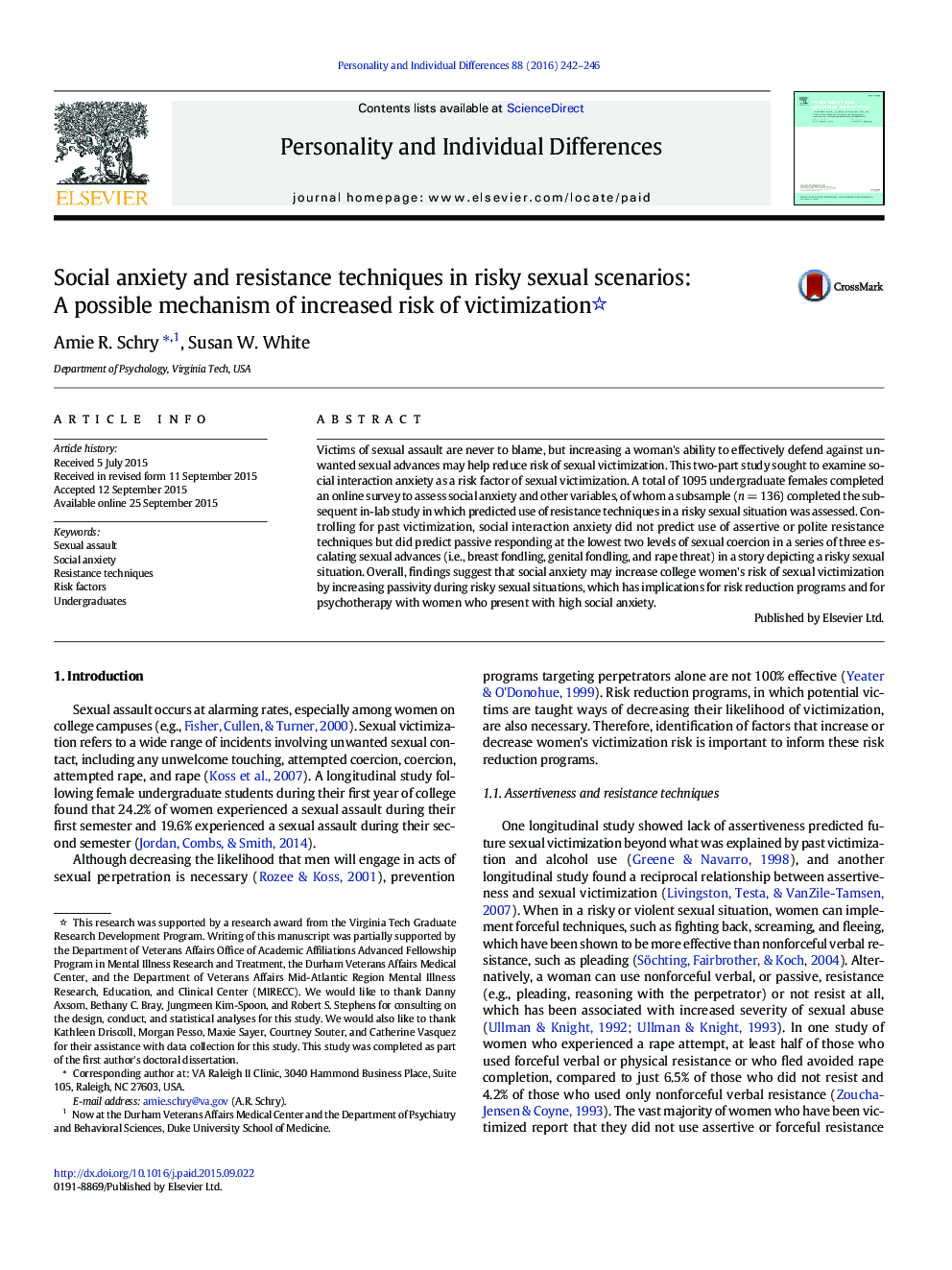| کد مقاله | کد نشریه | سال انتشار | مقاله انگلیسی | نسخه تمام متن |
|---|---|---|---|---|
| 889925 | 1472030 | 2016 | 5 صفحه PDF | دانلود رایگان |
• Social anxiety (SA) was examined as a risk factor for sexual victimization.
• SA was positively related to predicted use of passive resistance techniques.
• SA was not related to predicted use of assertive or polite resistance techniques.
Victims of sexual assault are never to blame, but increasing a woman's ability to effectively defend against unwanted sexual advances may help reduce risk of sexual victimization. This two-part study sought to examine social interaction anxiety as a risk factor of sexual victimization. A total of 1095 undergraduate females completed an online survey to assess social anxiety and other variables, of whom a subsample (n = 136) completed the subsequent in-lab study in which predicted use of resistance techniques in a risky sexual situation was assessed. Controlling for past victimization, social interaction anxiety did not predict use of assertive or polite resistance techniques but did predict passive responding at the lowest two levels of sexual coercion in a series of three escalating sexual advances (i.e., breast fondling, genital fondling, and rape threat) in a story depicting a risky sexual situation. Overall, findings suggest that social anxiety may increase college women's risk of sexual victimization by increasing passivity during risky sexual situations, which has implications for risk reduction programs and for psychotherapy with women who present with high social anxiety.
Journal: Personality and Individual Differences - Volume 88, January 2016, Pages 242–246
